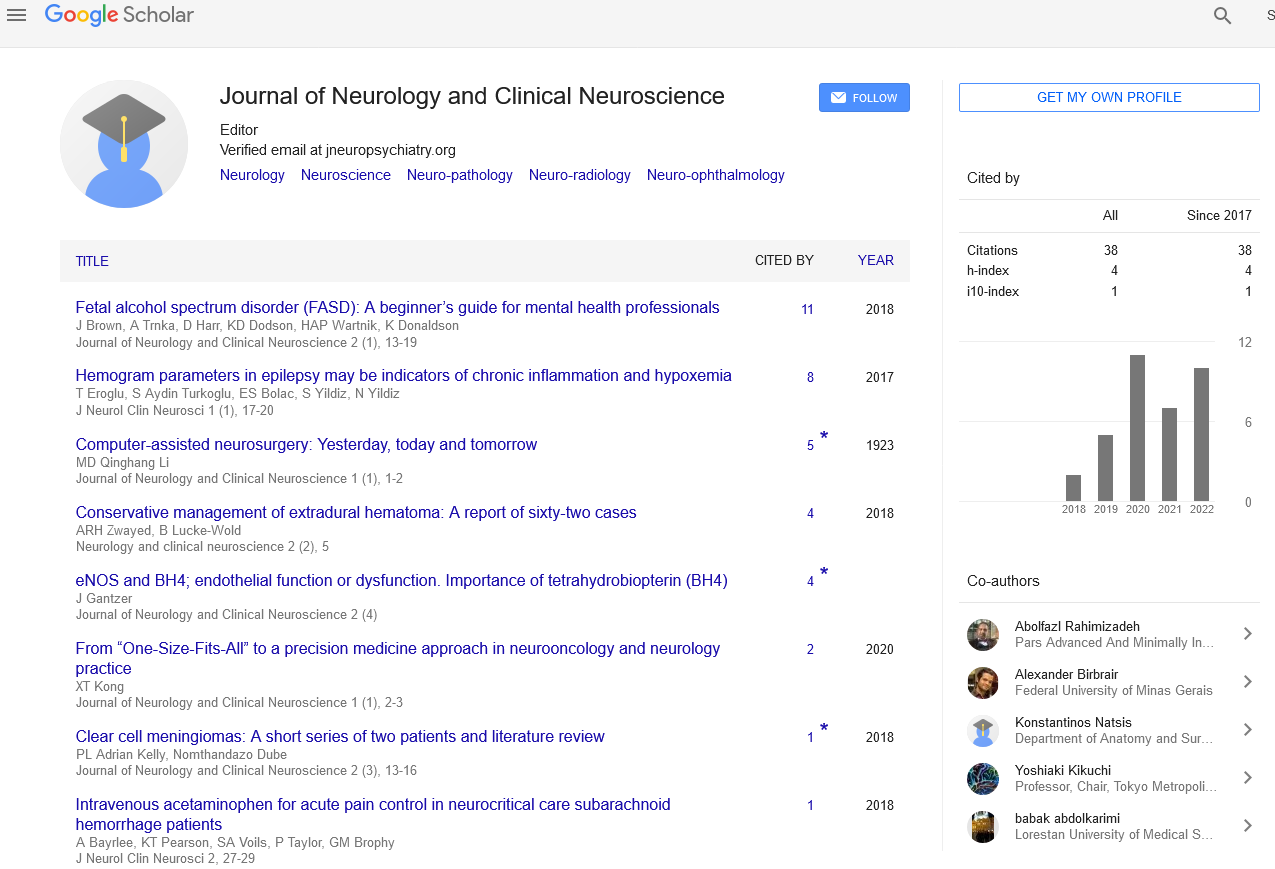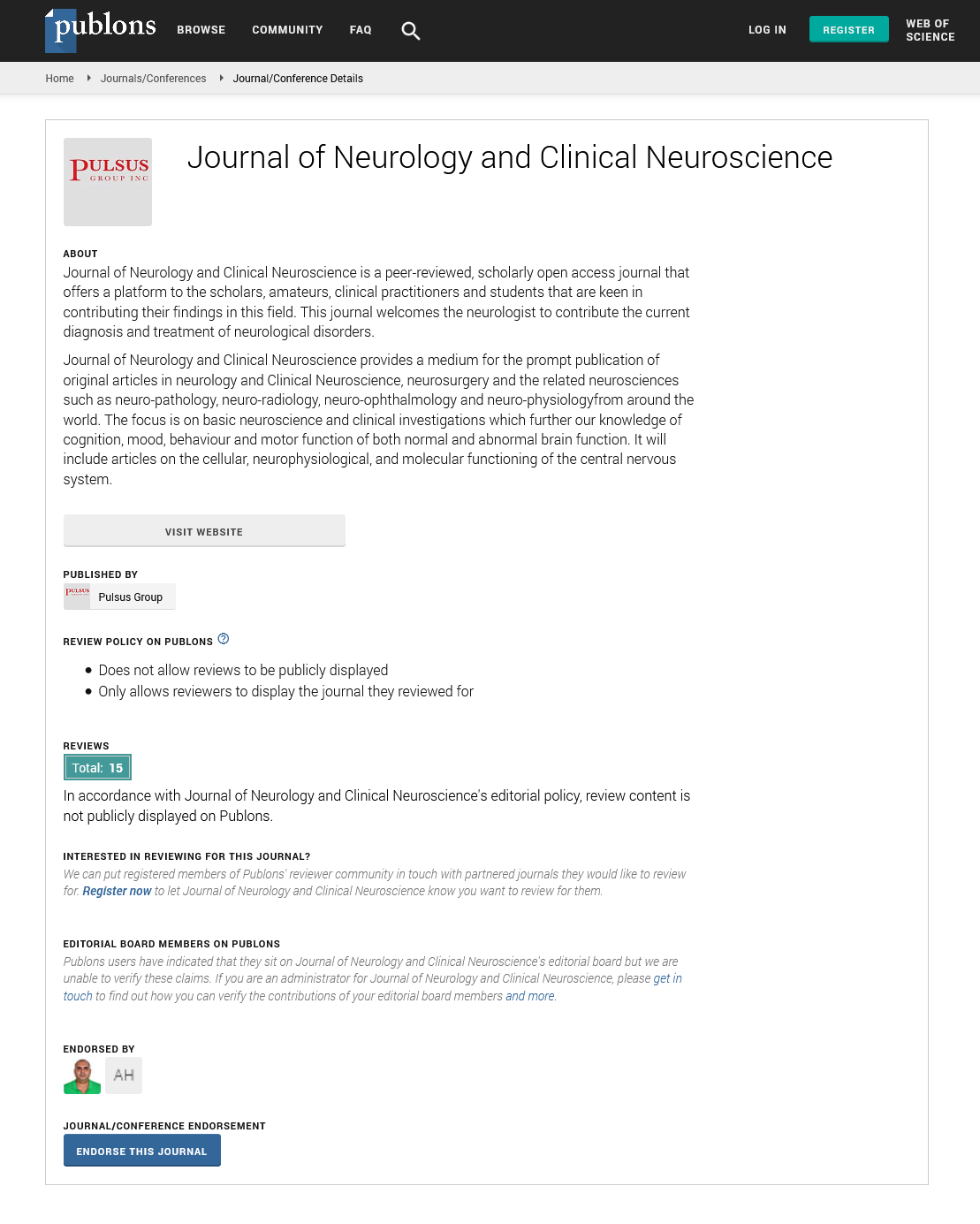Sign up for email alert when new content gets added: Sign up
Prevalence of Low Back Pain among female Health Sciences students
5th World Congress on SPINE AND SPINAL DISORDERS
October 16-17, 2019 | Rome, Italy
Sarah Nasser AlJasser, Zhour AlHedyan, Fahad AlShayhan and Munir Saadeddin
King Khalid University Hospital, KSA
Posters & Accepted Abstracts: J Neurol Clin Neurosci
Abstract :
Low back pain (LBP) is a physical and economical dilemma that individuals from all age groups encounter. Interestingly, LBP was considered as the leading cause of years lived with disability globally. A meta-analysis of the prevalence of low back pain in adolescents revealed that the mean lifetime prevalence was 39.9%. Anderrson defined LBP as pain restricted to the area between the lower borders of the 12th rib and gluteal folds. The commonest variety of back pain is LBP, arising in 60-80% of people at a certain point in their lives.
Methodology: A Quantitative cross-sectional study was conducted among seven hundred and forty-seven female undergraduates from five health-sciences colleges during the academic year 2016-2017. A self-administered questionnaire was conducted and included 4 sections: demographic characteristics, risk factors, Nordic Musculoskeletal Questionnaire and Oswestry Disability Scale.
Results: Mean age of participants 20.3 ± (1.5 years). 35.8% of students were physically active. The lifetime prevalence of LBP among female health science undergraduates was 53.1%, the 12-months prevalence was 47.4% and point prevalence was 21.6%. Medical college students reported significantly higher lifetime prevalence (64.3%). Physical activity was not associated with a point prevalence of LBP. BMI of more than 25 was associated insignificantly with increased risk of LBP (OR 1.13%; CI 95% 0.74-1,73; p=0.568. Feeling discomfort on bed was significantly associated with LBP (OR 2.49; 95%CI 1.74-3.65; p=> 0.001) Setting on comfortable college furniture was significantly related to decreased risk of LBP (OR 0.56%;95%CI 0.38-0.82; p= 0.003). Psychological factors such as being overwhelmed and feeling sad were associated with LBP. According to Oswestry disability scale, the majority of students who have LBP are having a minimal disability due to LBP.
Conclusion: This study has shown a high prevalence of LBP among future health care providers. Female medical students are at higher risk for developing LBP in comparison to other health science students.
Biography :
E-mail: s.aljasser666@gmail.com





